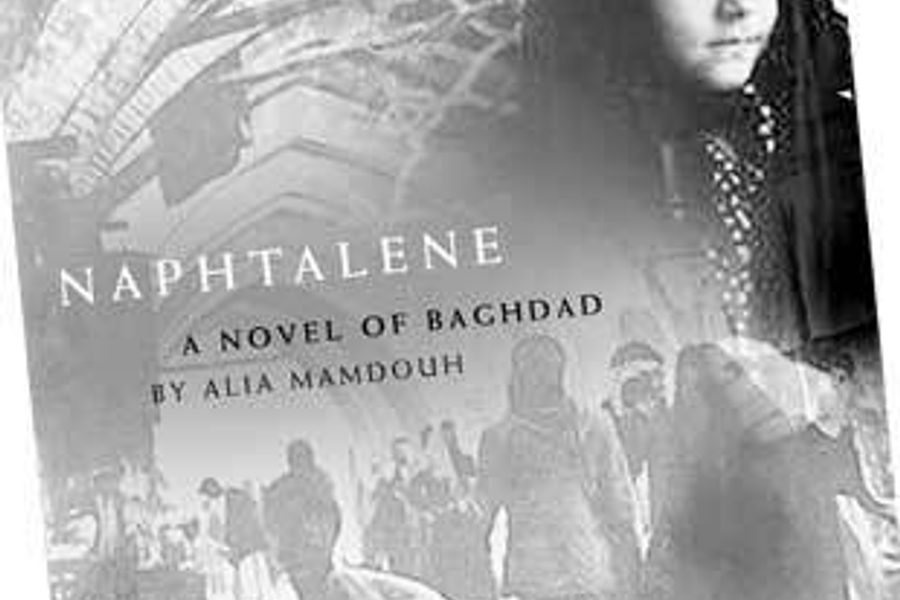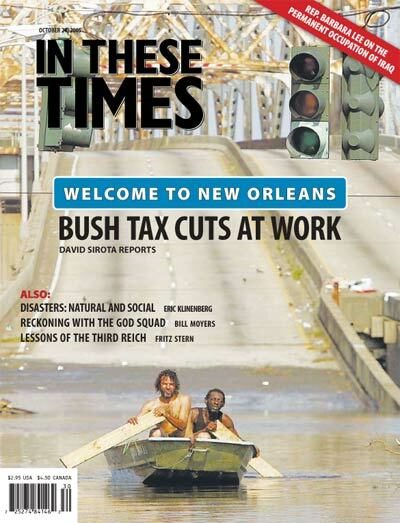
Naphtalene, the first novel by an Iraqi woman to be published in the United States, has taken a long time to arrive here.
A small Cairo press first published Alia Mamdouh’s second novel in 1986, just a few years after her controversial first novel, Leila and the Wolf, provoked the Iraqi government to prohibit her from publishing her work there. For the next decade, Naphtalene was largely ignored. Then, in 1996, Jordanian scholar Fadia Faqir rescued it from obscurity by choosing it as part of Garnet Publishing’s Arab Women Writers, a series of five novels translated into English and published in the United Kingdom. But not until this summer did a publisher – the Feminist Press at CUNY – bring Naphtalene to the United States.
But Naphtalene, a girl’s coming-of-age tale written 20 years ago and set in ’50s Baghdad, couldn’t be more timely. Indeed, Americans reading the book for the first time in 2005 will find it difficult to avoid comparing the Baghdad of the novel to the more tumultuous Baghdad ever-present in the news. Naphtalene subjects one Baghdad neighborhood to the scrutiny of a child who observes its deepest divisions and secrets, providing a profoundly human portrayal of the city that makes it more real, in many ways, than a view through a plasma TV ever could.
Nine-year-old Huda, who narrates the novel, draws readers into her home in Baghdad’s al-A’dhamiyya neighborhood, unveiling the kind of complex family dynamic inaccessible to forms outside the novel. For instance, she remembers to herself in internal dialogue, “[Your brother] was the youngest, the prettiest, the plumpest, the most delicate. You used to divide the world between you and him. He was order, melancholy, and introspection. You were anarchy, insolence, and violence.” The reflection prefigures the most deeply explored division within the families of Naphtalene: that between men and women.
True-to-life, Naphtalene depicts the division as complex and problematic for both sexes. The most prominent pairings – of Huda’s parents and her Aunt Farida and Uncle Munir – are portrayed as brutal and oppressive to women (as indeed many 1950s Iraqi relationships were). “So let males marry females,” Huda declares. “Let Farida, electrified by her constant laziness and long mistakes, walk to Uncle Munir. Let her rock back and forth to the music if her head is bowed or her hand is bound. Let her swallow his saliva, his water, and his phlegm; let the first Farida disappear.” Huda’s graphic description of Farida’s subjugation into nonexistence isn’t the only suggestion of men as captors. Huda’s violent father, Jamil, has an occupation that reinforces the stereotype: prison guard. The women, though, aren’t necessarily trying to break free. Huda’s mother, for one, is meekly obedient to Jamil until the moment he leaves her for another woman. And after Munir abandons Farida with little explanation, she sorrowfully waits every day for his return.
But before Huda’s watchful eyes, these characters, and their world, turn inside out. By the time Munir returns without warning, Farida has completely changed, and in one of the novel’s most striking scenes, Huda’s formerly ambivalent aunt gets mad: “She grabbed him by the shirt and brought him down to the floor as he kicked about. She gathered her rage and screamed, ‘Even if I kill you with my own hands I won’t be satisfied.’ … She got up and put the pillow over his face, sat on his chest … and stripped him naked.” In a similar power shift, Jamil, when his children visit him at the prison after a long separation, begins to sob. Later, denied a much-desired promotion because of his alcoholism, Jamil attempts suicide by setting himself on fire. His unraveling, like Farida’s rage, is a powerful metaphor for the world’s malleability.
Mamdouh also displays the malleability of Huda’s world through the overlap of seemingly dissimilar images and sounds in the girl’s mind. Pee hitting asphalt, for example, sounds to her like radio static. Similarly vivid images pepper the book. Sometimes, though, Mamdouh gets too caught up in Huda’s descriptions, filling entire paragraphs with banal minutiae, like, “The boys and girls wore cheap clothes, and their shoes were scruffy. Their socks were uneven – one high, the other low.”
Such trivialities, however, don’t distract the reader from Huda’s portrait of Baghdad as a place with a vibrant hold on the hearts and minds of its residents. And while the current bombings in Baghdad slide further and further back in the pages of our newspapers, in the hands of Mamdouh the city and its residents become – for a while, at least – inescapable.





